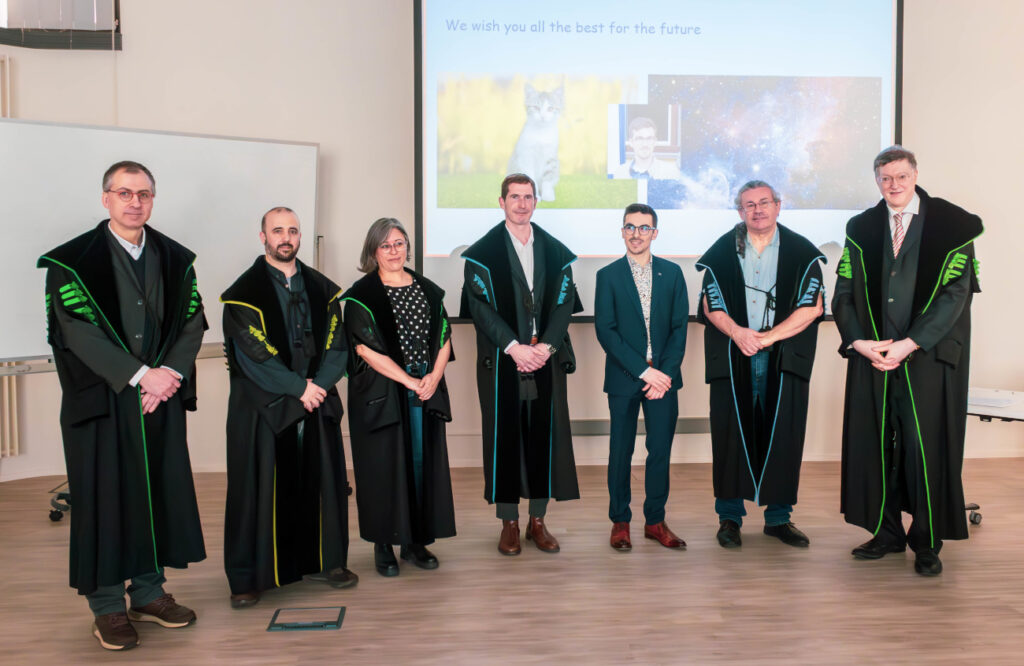On March 18th, 2024, Prof. Luis A. Leiva, the coordinator of the Symbiotik project, participated as external evaluator of the PhD jury of Arthur Sluÿters, PhD candidate at Université catholique de Louvain (UCLouvain), member of the LouRIM institute, under the supervision of Prof. Jean Vanderdonckt, partner in SYMBIOTIK.
After previously defending the private defense, Arthur Sluÿters presented his research during a public defense in front of a general audience and the members of the jury:
- Prof. Suzanne Kieffer (secretary) UCLouvain, Belgium
- Prof. Sébastien Lambot (co-advisor) UCLouvain, Belgium
- Prof. Luis A. Leiva University of Luxembourg, Luxembourg
- Prof. Paolo Roselli Università di Roma “Tor Vergata”, Italy
- Prof. Jean Vanderdonckt (co-advisor) UCLouvain, Belgium
- Prof. Peter Van Roy (president) UCLouvain, Belgium

Title: An Integrated Development Environment for Gesture-based Interactive Applications – Instantiation to Radar Gestures.
Abstract: Radar sensors combine a small form factor and low power consumption with the ability to sense gestures through opaque surfaces and under unfavorable lighting conditions, all while preserving user privacy. These unique advantages could make them a credible and useful alternative to other types of sensors, such as cameras or inertial sensors, for gesture recognition. However, research on radar-based gestural interfaces is in its infancy and many challenges that hinder their seamless integration and widespread adoption still must be solved. In particular, the lack of standardization translates into a plethora of custom radar sensors and techniques, preventing efficient collaboration between developers. In addition, radar signals can be noisy and complex to analyze, and do not transpose well from one radar to another. This thesis investigates and advances the state of radar-based gesture interaction in two stages. First, it explores the use of radar sensors for gesture recognition by reporting results from a targeted literature review and two systematic literature reviews, unveiling a large variety of radar sensors, gesture sets, and gesture recognition techniques, as well as the many challenges of real-time gesture recognition. Second, it provides tools and methods that facilitate the development of highly usable radar-based gesture interfaces by bridging the gap between researchers and practitioners. In particular, it introduces QuantumLeap, a modular framework for gesture recognition that acts as an intermediate layer between (radar) sensors and gesture-based applications and facilitates the performance and efficiency evaluation of gesture recognizers. Additionally, it proposes a user-centered development method for gesture-based applications and applies it to a multimedia application. Finally, it introduces and evaluates a new gesture recognition pipeline that implements advanced full-wave electromagnetic modeling and inversion to retrieve physical characteristics of gestures that are independent of the source, antennas, and radar-hand interactions.
Keywords: gesture recognition; radar; development environment.
